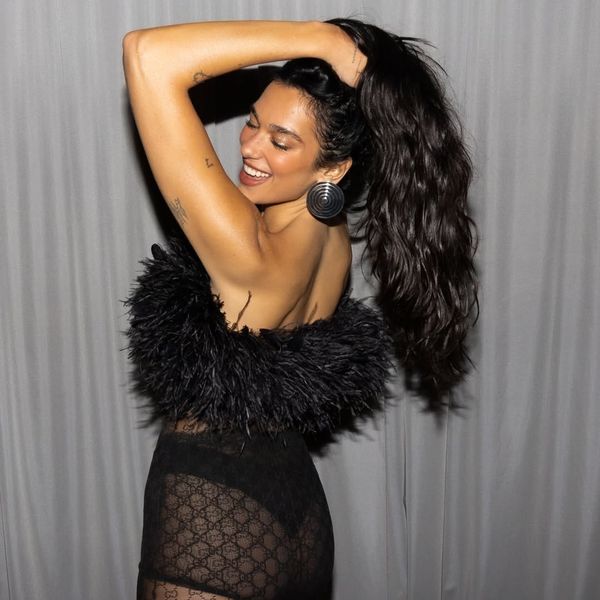"Jennifer's Body" Was Always For The Girls
From critically derided to queer canon, we investigate the enduring legacy of the cult horror film.
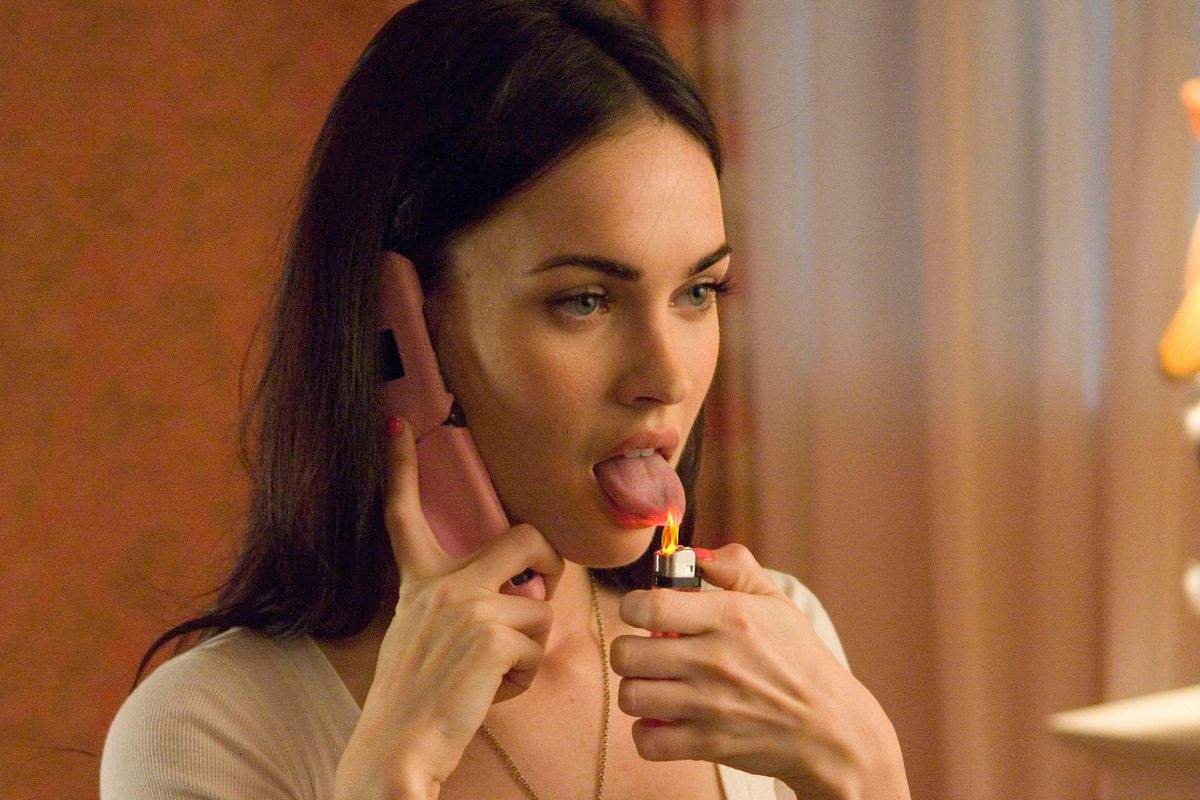
Best friends Needy Lesnicki and Jennifer Check are teenage girls living in the spooky, atypical horror-genre town of Devil’s Kettle. Introduced in a cheerleader’s outfit, Jennifer is the stereotypical hot mean girl, played by raven haired, drop-dead-gorgeous Megan Fox. Needy is the cardigan-wearing, bespectacled, pretty-but-nerdy friend, gauchely played by Amanda Seyfried. Against her better judgment, she lets Jennifer convince her to go the town’s single seedy dive bar to watch an out-of-town band called Low Shoulder—because that’s what toxic best friends do.
The night spirals. After hearing the sleazy lead singer (played perfectly by Adam Brody) question Jennifer’s virtue, Needy, in an act of girlish defensiveness, informs him that her best friend is actually a virgin. Chaos ensues. The bar goes up in flames. The band kidnaps a shell-shocked Jennifer, taking her to the woods and sacrificing her virginal soul in exchange for Luciferian success (leading to the iconic quote: “Do you know how hard it is to make it as an indie band these days? Satan is our only hope.”) Jennifer—who is “not even a backdoor virgin”—emerges from the satanic ritual transformed into a literal man-eating demon. The carnage that follows is both grotesque and hilarious: a high-school horror that skewers girlhood, sexuality, and the male gaze in equal measure. Director Karyn Kusama once called it “a fairy tale gone psycho.”
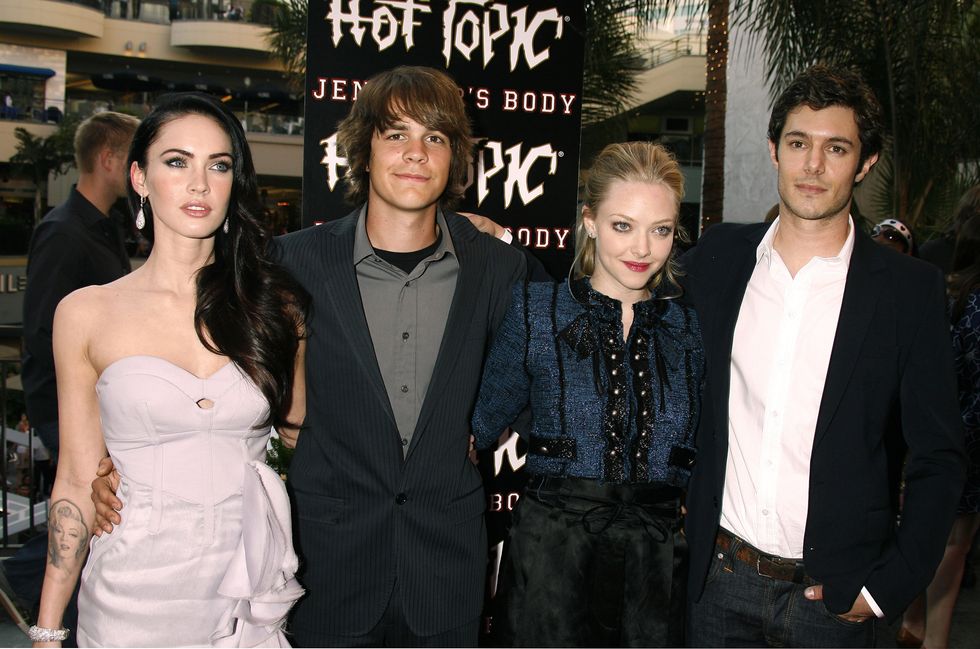
Jeffrey Mayer/Getty
I first discovered Jennifer’s Body on Tumblr in 2009, back when it was a free-for-all of film stills that summed up the wistfully-romanticized horrors of teenage girlhood. The infamous lesbian kissing scene between Jennifer and Needy, another of Jennifer emerging from swimming under the surface of a glacial black lake, steam rising off of her naked body—they were film GIFs I watched on loop (and heavy nods to my nascent bisexuality). Downloading the film from an illegal torrenting site, I watched the plot unfold with rapture, cycling through emotions that I couldn’t yet easily detangle, or comprehend coexisting: desire and sympathy, disgust and arousal. As a dramatic, confused, hormonal teenage girl, the storyline resounded with something inside of me that had been, up to this point, unexpressed.
I wasn't alone in this. Tumblr introduced thousands of lonely, misunderstood, and self-obsessed teenage girls to television, film, music and literature that has gone on to be remembered as zeitgeist defining. All of them shone a particular kind of romanticized lens on the abjection of adolescent femininity: The Virgin Suicides, Lost in Translation and Girl, Interrupted all featured solipsistic, misunderstood and disillusioned protagonists is a way that could be perfectly distilled into a screenshot and reblogged, saved and worshipped by girls swimming in the waters of teenaged girl hell.
Jennifer’s Body is a film arguably about just that. Pre-demonic transformation, she is already a threat to the patriarchy simply by being a beautiful young woman fully aware of her beauty and the powers it grants her. Jennifer's succubus transmogrification only exacerbates these characteristics and literarizes what the patriarchy already feared: a woman who feeds upon men and makes them her prey, instead of the other way around. And what could have been more confusing to a male film critic in 2009 than a teenage girl who knows—and enjoys—her own power?
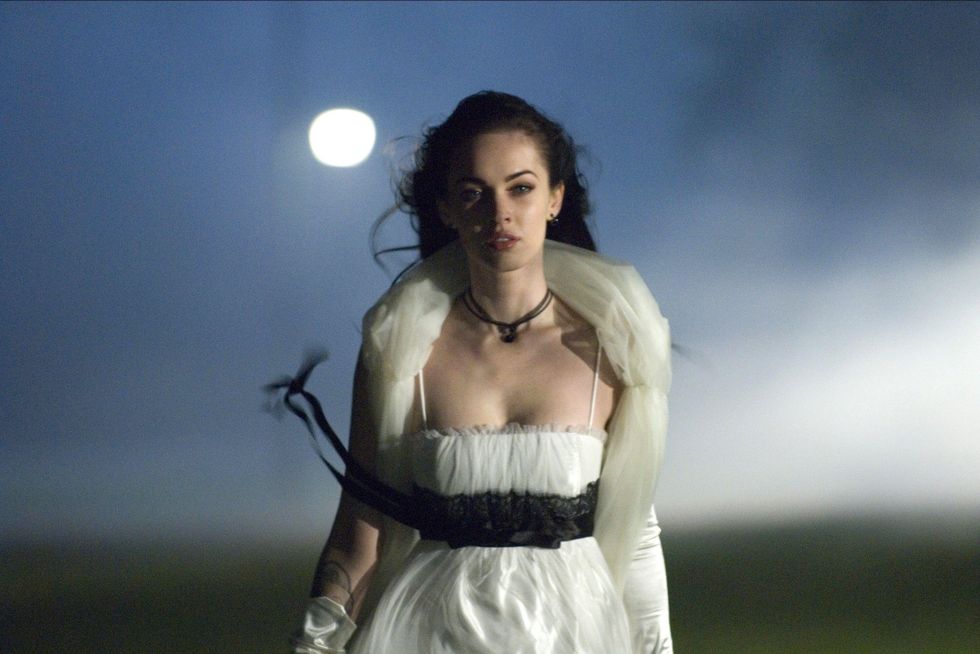 WARNER BROS / Alamy
WARNER BROS / AlamyDespite its now-cult status, Jennifer’s Body bombed at the box office. “The late 2000s were a weird cultural moment,” says London film collective Deeper Into Movies. “Post-American Pie, Hollywood still treated the ‘hot girl’ as both spectacle and punchline.” This was clear in the film’s marketing: Despite being both written and directed by outspoken feminist women, the film distributors couldn’t see past post-Transformers Megan Fox’s blinding fame as a one-dimensional Hot Girl, and thus decided to market the film to horny teenage boys. The white cis men who made up the majority of the film's critics also couldn’t understand it—it wasn't bloody enough, scary enough. But we know now the real horror wasn’t the bloodshed or gory murders. As Needy eloquently puts it in the opening scene, “Hell is a teenage girl.”
Fifteen years later, and I still open my lock screen to a picture of Megan Fox as Jennifer, blood dripping down her creepy, smiling face. On TikTok, I scroll through videos of young girls lip-syncing over a viral soundbite from the film of Jennifer confessing her demonic powers to her best friend. In 2025, why does the film more relevant than ever (and finally with a sequel on the way)?
Despite embodying many film tropes, one notably missing from the film is the lack of boy-meets-girl love story. Instead, the romantic plot centers on the claustrophobic, invasive, and sensuous bond formed between two female best friends—labeled as “lesbi-gay” by a classmate—and how they navigate the slippery complexities of bisexuality and sapphicly-laced friendship. It’s not a coincidence that Jennifer shows specific interest in hunting down and devouring Needy’s male romantic interests.
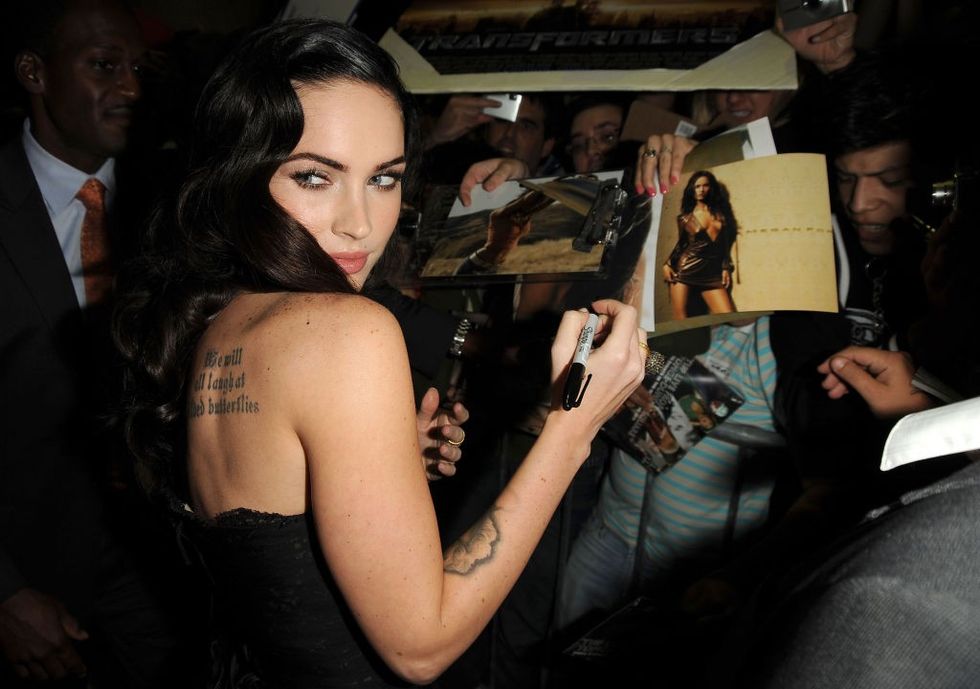
George Pimentel/Contributor
As A.O. Scott observed for the New York Times, “Jennifer is the embodiment of a series of high school clichés that almost entirely obscure her inner life. She’s a mean girl, a bad girl, a popular girl, a dream girl, the one every other girl envies and every boy wants.” But, as social media has shown us, even the most beautiful girl you know is a victim of the social structures that both support and trap us. As Deeper Into Movies says, “It speaks to [a horror] that’s still true: being young, female, and desirable in a culture that feeds on you.”
Jennifer’s objectification is epitomized when, following Needy’s exclamation of, “You are killing people!” Jennifer rolls her eyes and retorts, “I’m killing boys.” What could be more terrifying to patriarchal society than an unkillable, demonic, man-eating woman who loves being an unkillable, demonic, man-eating woman? One might say she was embracing her #DarkFeminine energy way before it was trending on TikTok.


